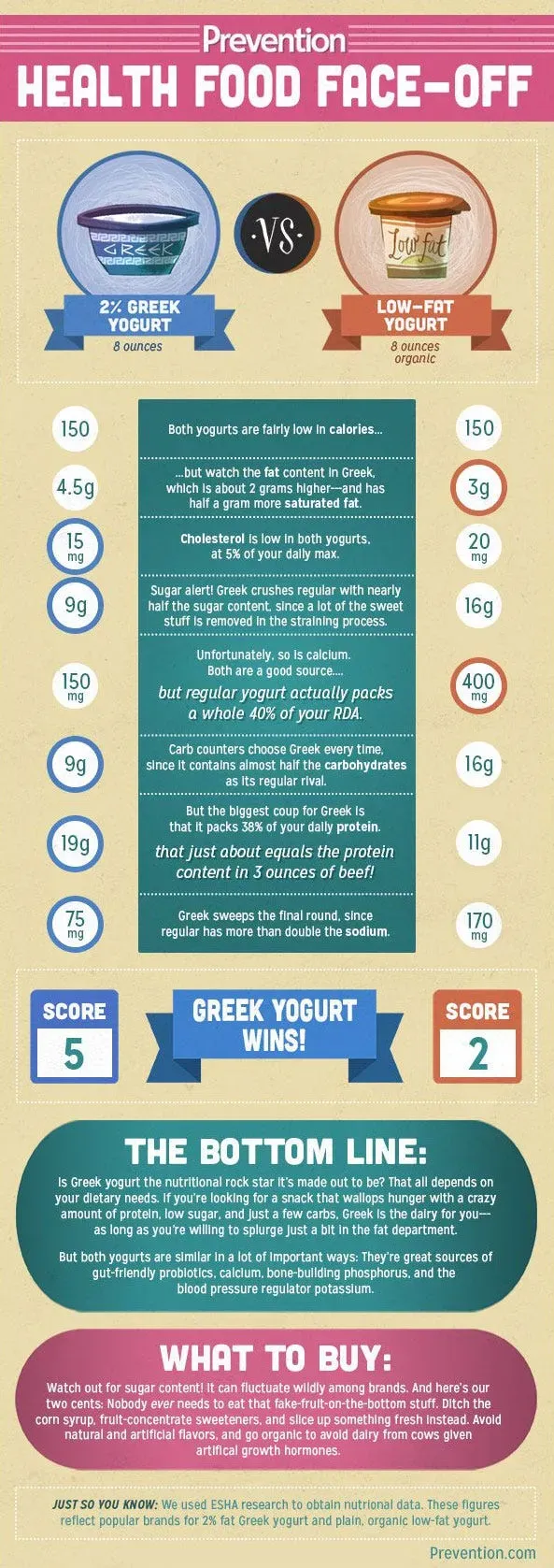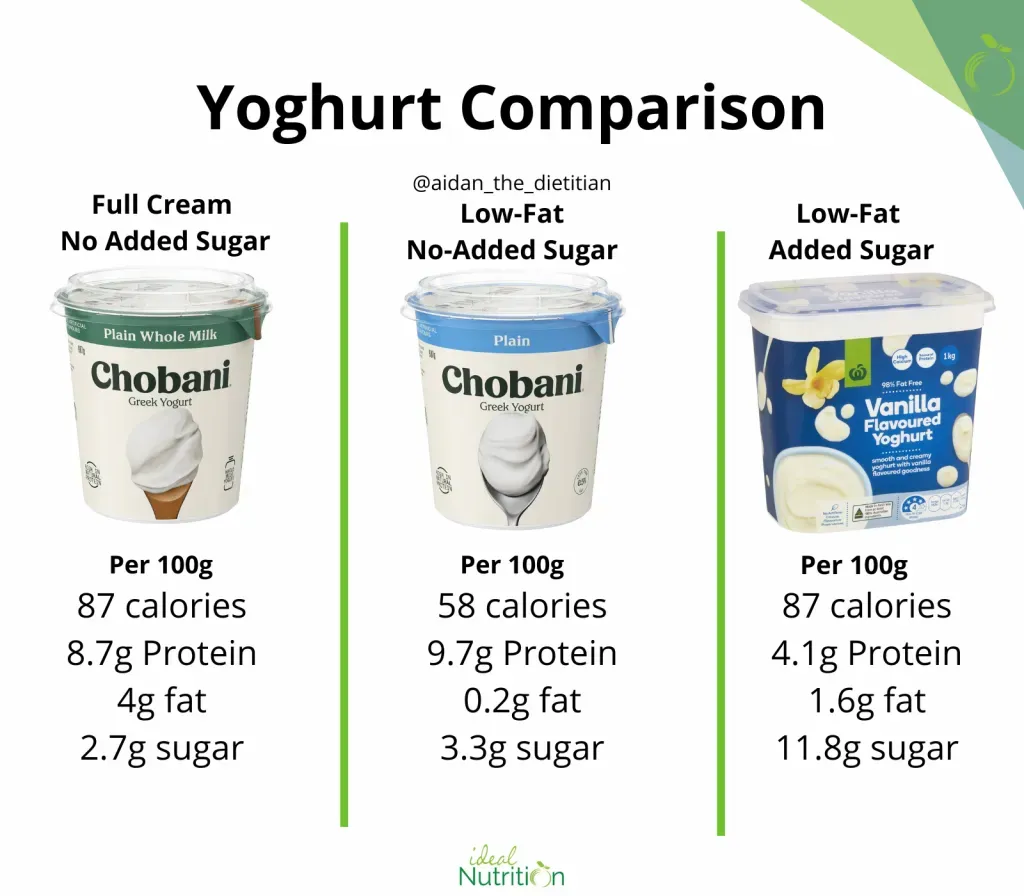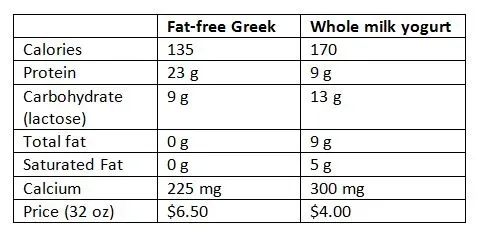Table of Contents
Standing in the dairy aisle, faced with countless tubs, a common question arises: full fat yogurt vs low fat? It seems like a simple choice, but the debate runs deeper than just a few grams of fat. Some folks reach for the creamy indulgence of full fat, convinced it tastes better and keeps them feeling full. Others religiously pick up the low fat options, operating under the assumption it's the automatically healthier route. But is the decision truly that clear-cut? The truth is, the difference between full fat yogurt vs low fat involves more than just calories or a simplistic "healthy" label. It's about texture, how nutrients are absorbed, and what genuinely supports your dietary goals. This article aims to unpack the real story behind these two popular dairy choices, looking past the packaging hype to the actual nutritional profiles, potential health effects, and how they fit into everyday eating. Let's figure out if creamy goodness or calorie cutting wins the day for you.
The Taste and Texture Showdown: Full Fat Yogurt vs Low Fat

The Taste and Texture Showdown: Full Fat Yogurt vs Low Fat
Creamy, Dreamy Full Fat
Let's be honest, the first thing most people notice when pitting full fat yogurt vs low fat is the mouthfeel. Full fat yogurt? It's a whole different ballgame. Think rich, thick, and utterly creamy. It coats your tongue in a way low fat just can't replicate. This isn't accidental; that higher fat content is the key player here. It gives it a luxurious density, making it feel more substantial, almost like a dessert. When you scoop it out, it holds its shape beautifully, none of that watery separation you sometimes see. It just feels more satisfying, a genuinely indulgent experience.
The Lighter Side of Low Fat
Now, switch gears to low fat yogurt. The texture shifts dramatically. It's typically thinner, sometimes even a bit gelatinous depending on the brand and added thickeners. The creaminess is often replaced by a tangier, sometimes sharper flavor profile. Without the fat to carry and mellow out the acidity, the sour notes come to the forefront. It can feel less substantial, less filling. You might find yourself eating more to get that same feeling of satisfaction. It's not necessarily bad, just different. It's lighter, yes, but that lightness comes at the cost of that decadent texture full fat offers.
Feature | Full Fat Yogurt | Low Fat Yogurt |
|---|---|---|
Texture | Thick, creamy, dense | Thinner, sometimes watery or gelatinous |
Taste | Rich, mellow, less tangy | Tangier, sometimes sharper |
Mouthfeel | Coating, substantial | Lighter, less coating |
Processing Plays a Role
It's not just the initial fat content that defines the full fat yogurt vs low fat experience. How the yogurt is processed matters too. When fat is removed to make low fat versions, manufacturers often add things back in to try and mimic the texture that was lost. We're talking about stabilizers, thickeners like starches or gums, and sometimes more sugar to compensate for the reduced richness and increased tang. This tinkering can affect the final product's feel and flavor. Full fat yogurt generally requires less interference, relying on the natural fermentation and milk solids to create its characteristic texture and taste. So, while the fat level is the primary difference, the ingredients list tells another part of the story in the full fat yogurt vs low fat comparison.
Beyond the Fat: Nutritional Facts of Full Fat Yogurt vs Low Fat

Beyond the Fat: Nutritional Facts of Full Fat Yogurt vs Low Fat
More Than Just Fat Grams
When comparing full fat yogurt vs low fat, it's easy to get fixated solely on the fat content listed on the label. Sure, full fat has more fat, obviously. But peeling back the nutritional facts reveals a more nuanced picture. Full fat yogurt often contains more calories overall because fat is calorie-dense. However, it's not just about the total calorie count. The type of nutrients present and how your body processes them is crucial. Low fat versions might have fewer calories from fat, but they can sometimes pack in more sugar or other carbohydrates to make up for the lack of flavor and texture. This means you're trading fat calories for sugar calories, which isn't always a winning proposition for everyone. Understanding the full nutritional breakdown, beyond just the fat line, is key when weighing full fat yogurt vs low fat.
Health Impacts: Is Full Fat Yogurt vs Low Fat Better for You?

Health Impacts: Is Full Fat Yogurt vs Low Fat Better for You?
Beyond the Scale: Real Health Considerations
So, when we talk about health impacts and pitting full fat yogurt vs low fat, it's not just about which one has fewer calories at first glance. For years, the low-fat dogma pushed people towards fat-free dairy, often overlooking what replaced that fat. Turns out, fat isn't always the enemy. The fat in full fat yogurt can actually help your body absorb fat-soluble vitamins like A, D, E, and K, which are naturally present in the dairy. Plus, the higher fat content tends to be more satisfying, keeping you feeling full longer and potentially reducing the urge to snack on less healthy things later. On the flip side, low-fat versions, stripped of their natural richness, frequently compensate with added sugars or artificial sweeteners to make them palatable. Loading up on added sugar has its own set of health downsides, from blood sugar spikes to potential weight gain, which might just negate any perceived benefit of cutting fat. The health equation for full fat yogurt vs low fat is clearly more complex than a simple fat gram comparison.
Cooking, Baking, and Snacking: Using Your Yogurt

Cooking, Baking, and Snacking: Using Your Yogurt
Baking and Cooking with Creamy Full Fat
When you're looking to add moisture, richness, or a tender crumb to your baking or cooking, full fat yogurt is often the MVP. Its higher fat content acts like a silent hero, preventing dryness and adding a luxurious texture that low fat versions just can't replicate. Think about substituting some of the butter or oil in muffins, cakes, or even savory dishes. The fat helps carry flavors and keeps things moist for longer. It's also fantastic in sauces or dips where you want that smooth, velvety finish without adding cream. You get that tang, yes, but it's beautifully balanced by the fat. Using full fat yogurt vs low fat in these applications often yields a superior result, a little culinary secret weapon.
Snacking and Lighter Fare with Low Fat
Low fat yogurt finds its niche when you want something lighter or less rich, particularly for snacking or certain recipes. It's the go-to for a quick breakfast with granola and fruit, or blended into smoothies where you don't need the extra density of full fat. Because it's tangier, it can work well in marinades for meat, helping to tenderize and impart flavor. Just be mindful of the added sugars if you're buying flavored low fat options. If you're substituting low fat yogurt for full fat in baking, be prepared for a different outcome – potentially drier or less tender. Sometimes, the comparison of full fat yogurt vs low fat isn't about better or worse, but simply about choosing the right tool for the job.
- Full Fat: Ideal for richer baked goods, creamy sauces, dips, and decadent parfaits.
- Low Fat: Great for smoothies, marinades, lighter snacks, and as a topping where richness isn't needed.
- Consider added sugar in low fat options, especially for snacking.
- Full fat provides better moisture and tenderness in baking due to higher fat content.
Making Your Choice: Weighing Full Fat Yogurt vs Low Fat
Alright, so after diving into the creamy depths of full fat and splashing around in the lighter waters of low fat, the question remains: how do you actually make the call when you're staring at that dairy case? Making Your Choice: Weighing Full Fat Yogurt vs Low Fat boils down to a few personal factors, not a universal decree. Consider what you plan to do with it. Is it for baking that needs richness, a quick grab-and-go snack, or maybe a base for a savory sauce? Think about your own dietary needs and how different nutrients affect you. Does a little extra fat keep you satisfied longer, preventing later cravings? Or are you strictly tracking calories and find low fat fits your numbers better? There's no single "right" answer that applies to everyone; it's about aligning the yogurt's profile with your specific goals and how you plan to use it.
The Verdict on Full Fat vs Low Fat Yogurt
So, after wading through the creamy textures, nutritional facts, and health claims, where do we land on the full fat yogurt vs low fat debate? The short answer is, predictably, "it depends." Choosing between a tub of full fat and its low fat counterpart isn't about finding a single "winner." It's about understanding what each brings to the table and how it aligns with your personal dietary landscape and goals. Full fat might offer more satisfaction and help you absorb certain vitamins, while low fat trims calories, potentially at the cost of added sugars or a less appealing texture. Neither is a magic bullet, and neither is inherently "bad." Consider your overall diet, your taste buds, and what helps you stick to a sustainable eating pattern. The best yogurt is the one you'll actually eat and that serves your needs, not just the one marketed as the "healthiest."
